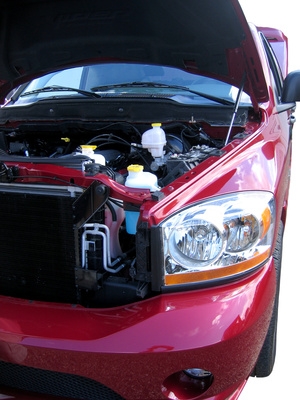
Dodge Rams, while not known for developing steering problems, can age like any other truck. These problems are often the result of improper maintenance of the tires or wear on the steering column and shock absorbers. Often the problem is less serious than it seems. If the wheel is getting less responsive, it may simply be inadequate tire pressure.
Check the steering gear. Some 1999 Dodge Rams have been known to have a 'honking' noise coming from the steering rack. To remove the noise, you have to swap out the steering gear itself as the internal machining causes friction when turning the steering wheel, producing the noise.
Check the color of the casing for the bearings on a nontilt steering column in a 1996 Ram. Replace any steering column with bearings in a black casing. A common fault on a 1996 Ram is a click on nontilt steering columns. The bearings for the replacement steering column should be in a gold casing. This will eliminate the click.
Check the pressure on the tires. The Dodge Ram is prone to wandering steering and poor steering feel. These problems can be attributed to incorrect tire pressure. Adjust the tire pressures if they are not correct. The correct pressures for your tires can be found in the vehicle repair manual.
Replace the track bar to correct excessive play in the steering. A bad track bar will cause axle vibration and steering shimmy.
Check the shock absorbers. Replacements are due every 20,000 miles or so. Push down on the fenders, one at a time, and check for the speed of return. If a side is slow returning or does not come back up fully, this means the shocks should be replaced.
Check the brake master cylinder seal. On the 2001 Dodge Ram, if you have no power steering or power brakes, then the brake master cylinder seal has failed. Both systems gain their vacuum from the one cylinder, so this will cause both the steering and brakes to fail.